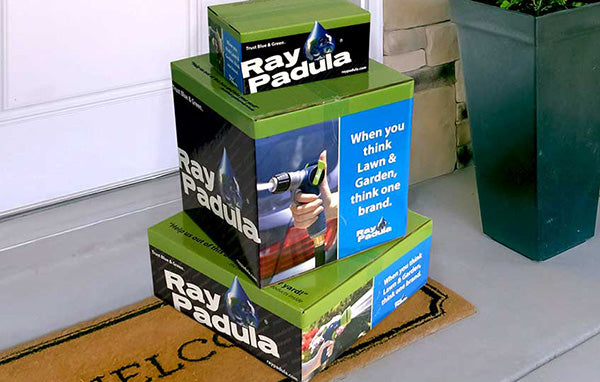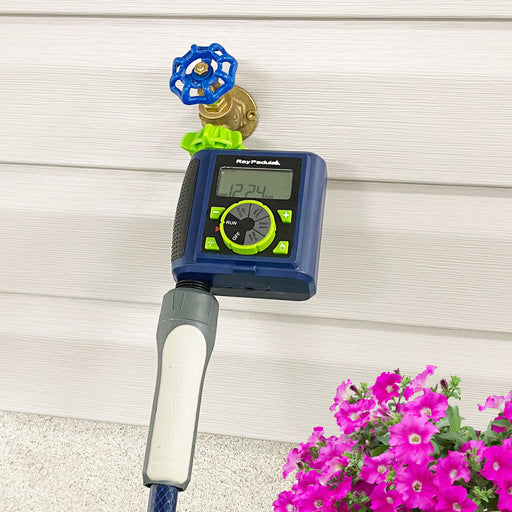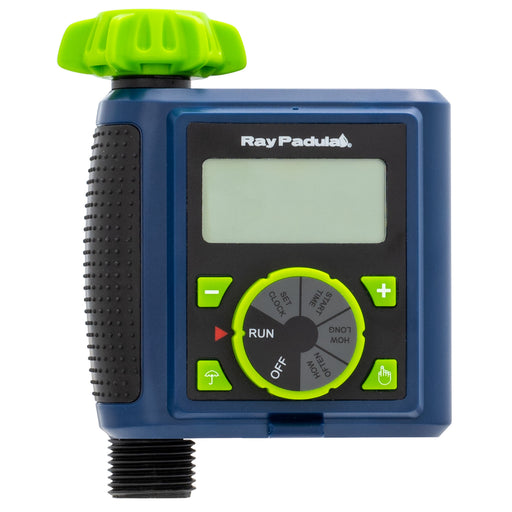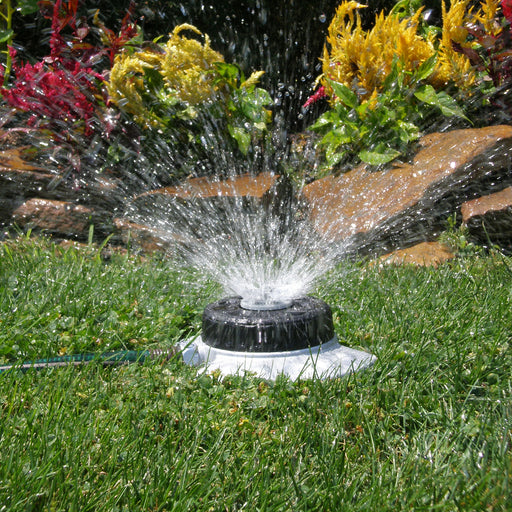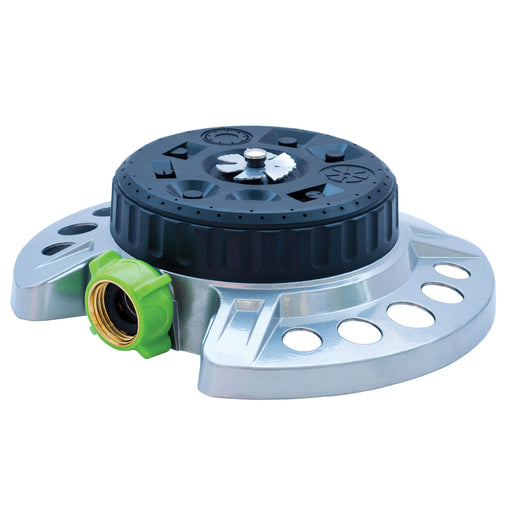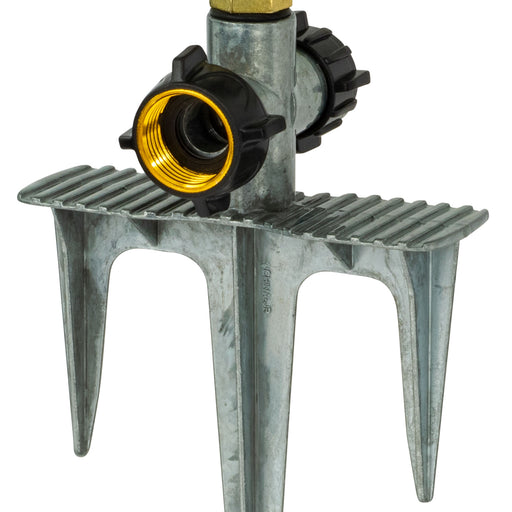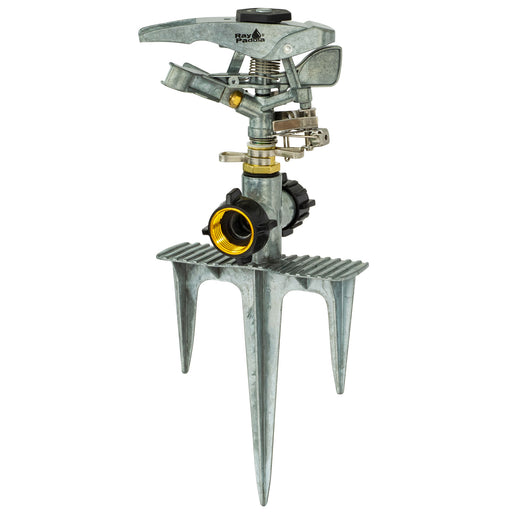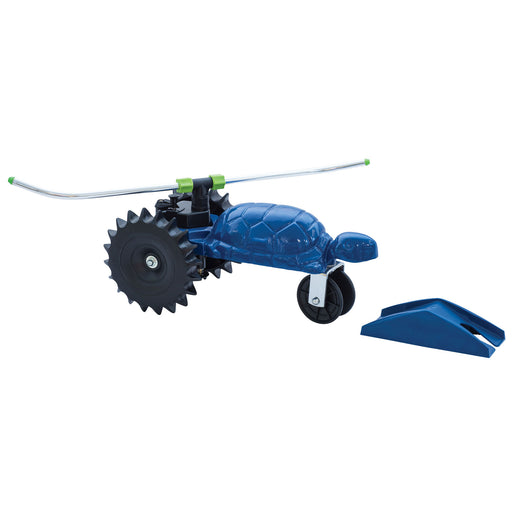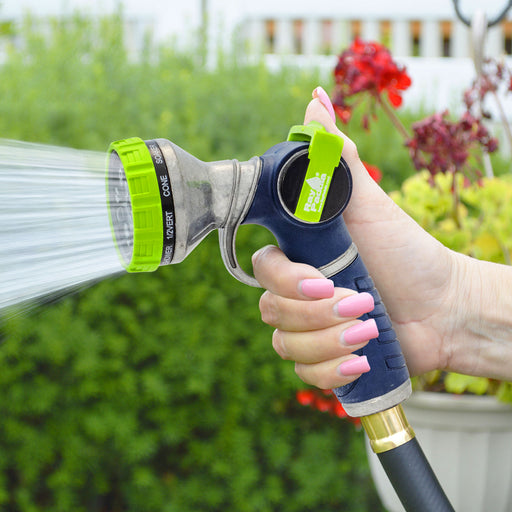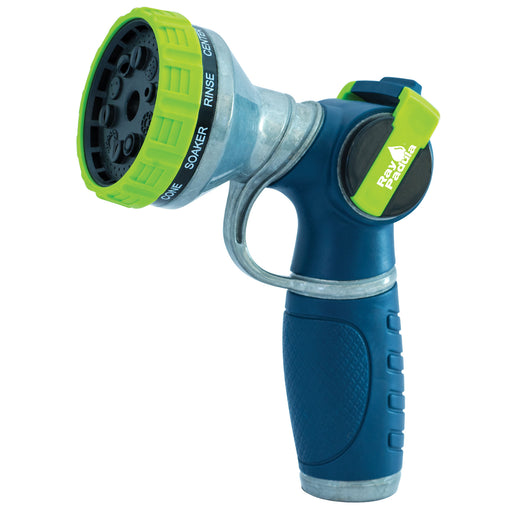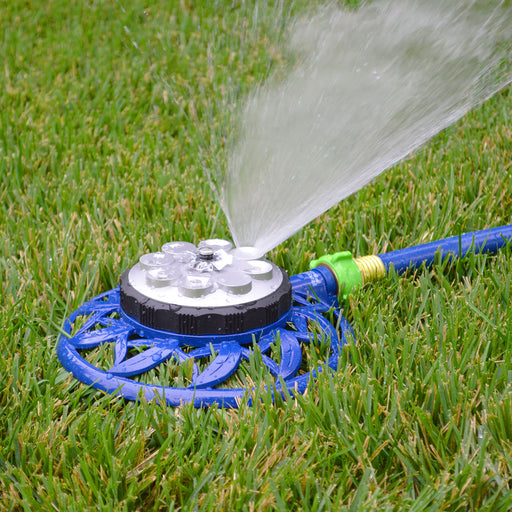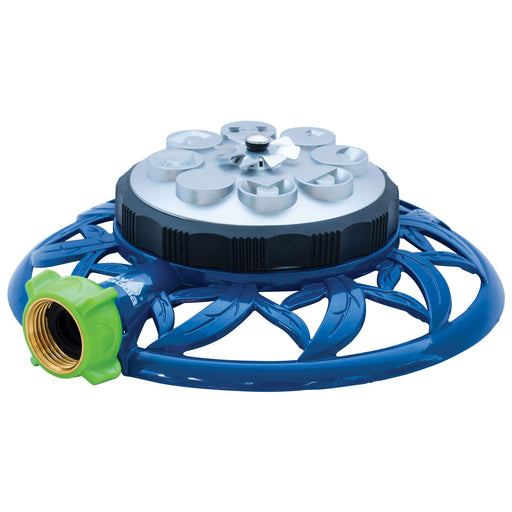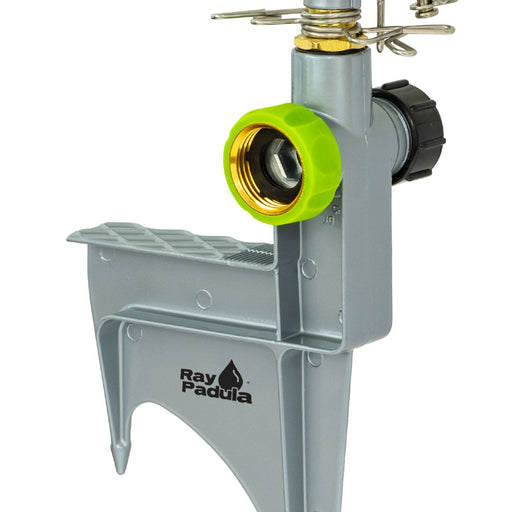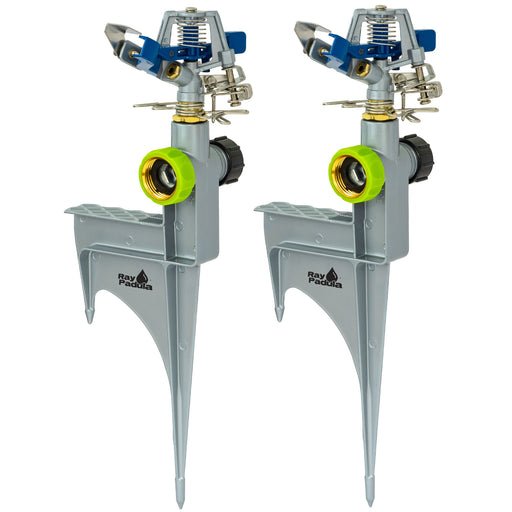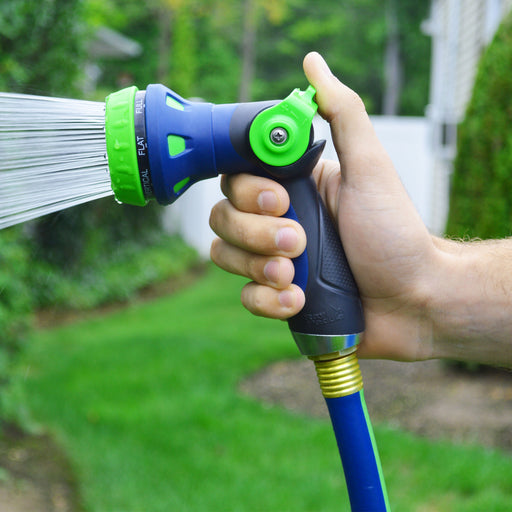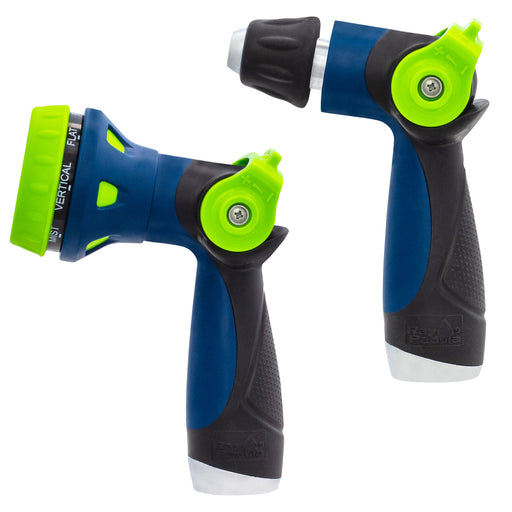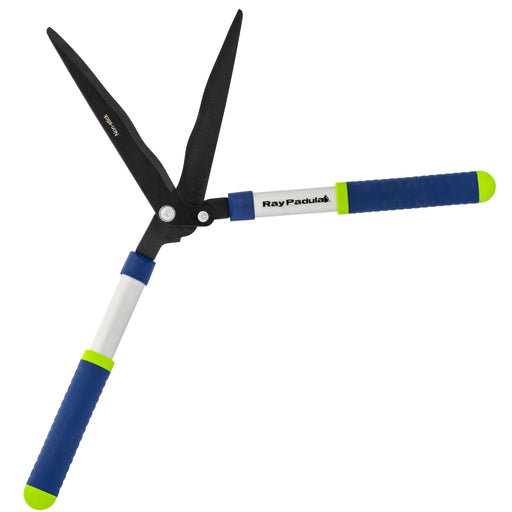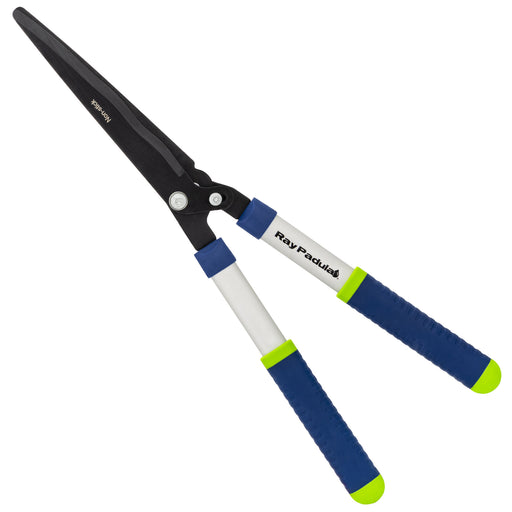
When it comes to watering your lawn, there are two words every gardener needs to remember - deeply and infrequently. The roots are where everything takes place, so you need to water properly to encourage healthy root growth. The same amount of water applied in smaller amounts, more frequently as compared to the same amount applied less frequently can wreak havoc on your lawn.
Consider the Roots
The roots are where all the magic happens. The roots of your lawn grow only as deeply as they need to in order to obtain water and nutrients. If you water your lawn frequently, but only a little bit, the roots will become shallow, because water is only near the surface of the lawn. While this may not be too bad in early Spring, once the hot summer months set in, and dryer, hotter temperatures arrive, immense stress will be placed on your lawn.
Deep, healthy roots are able to withstand drought conditions. They can find and extract moisture from deeper in the soil, even if the top layer of soil dries out. With stronger, deeper roots, you'll be required to water less frequently, and you lawn will be much more disease resistant. On the other hand, if you err on the side of caution and water too much, you'll be wasting both time and water. Overwatering will saturate deeper into the soil than the roots can reach, and deprive your lawn of much-needed oxygen by keeping the soil drenched. It is possible with overwatering to drown your lawn and its roots.
Water Absorption
Water your lawn until the water reaches between 6 and 8 inches deep into the soil. You can easily check this by poking a long screwdriver into the soil after watering. If the screwdriver inserts into the soil easily to a depth of 6 to 8 inches, you're all set. If not, keep at it until the moisture in the soil reaches down to that optimum level.
While watering, check the absorption rate of your soil to determine the amount of time you need to let the sprinkler run so that water is being absorbed, and not just running off. For example, clay soils are typically very slow to absorb water. If the water is puddling as your sprinkler is watering, you'll need to water in cycles. Water the lawn until you see some slight puddling, or run-off, then shut off the sprinkler, or move it to another part of the yard. Once the water has absorbed into the soil, you can continue watering again until the full amount has been applied.
For sandy soil, the opposite is true. Water typically won't run off, but will be absorbed so quickly that it may bypass the roots if too much water is applied at one time. Similar to clay soils, it would be best to water in cycles to prevent this from happening.

How much is Enough?
Most turf requires 1 - 2 inches of water per week, including rainfall. You can easily check how much water your sprinkler is applying by using a rain-gauge or by placing a can on the lawn within the coverage area of the sprinkler. Note the time that it takes the rain gauge or can to fill up with one inch of water. That's the amount of time it will take your sprinkler to apply 1-inch of water. Some sprinklers, like the Ray Padula turbine oscillator even features a built-in rain gauge, making this an easy task.
You can also leave your rain-gauge out in the yard when expecting rain-gauge to see if mother nature has provided enough water. If 1 to 2 inches of rain has not fallen, you'll have to make up for the rest with a sprinkler.
Unless you have an automatic, underground sprinkler system that can water your entire yard at once time, make sure your sprinkler pattern overlaps when moving the sprinkler around the yard. This will help eliminate accidental dry spots in the yard.
The amount of water your lawn needs can change throughout the season, depending on temperatures, rainfall, and other factors. In the heat of summer, some grass may even turn a yellow, burnt brown and go dormant. If that happens, don't panic, that's normal! During these times, if there are drought conditions, and regular watering isn't advisable, you can leave them dormant until rain comes, or watering can be completed. With just a few deep soakings, this grass will start to spring back to live in no time.
No matter the conditions, just remember to water deeply and infrequently.
Helpful Hint! If you walk across your lawn and your footprints remain in the grass for a long period of time, it's a common sign your lawn is in need of water!

Choose the Right Sprinkler
Choosing the right sprinkler for your yard is just as important as watering correctly. Typically there are five different types of major sprinkler types to choose from.
Oscillating sprinklers have a plastic or aluminum tube that throw water high into the air and move back and forth, typically placing water in a rectangular pattern. These are one of the most commonly seen sprinkler types. Because they throw water high into the air, they are not recommended if you live in a very windy area.
Pulsating, or impulse sprinklers pulse a stream of water in a circular motion. These sprinklers can be adjusted to water a full circle, or a partial circle, depending on the area you're watering. These are a great choice for windy or larger areas.
Revolving, or whirling sprinklers have multiple arms that spin a gentle spray of water. These are a great choice for smaller areas, and watering delicate plants and seedlings.
Stationary sprinklers offer a set watering pattern with no moving parts. These are commonly chosen for smaller yards and gardens. Some models offer one watering pattern, and others have a rotating top that will allow you to choose from different pre-set patterns.
Traveling, or tractor sprinklers are heavy duty sprinklers that automatically walk around your yard, following the path of the hose. These sprinklers are a good choice for larger areas, with well established lawns.
Underground sprinkler systems are permanent irrigation systems that are installed below ground. Controlled by an automatic timer, separate sections, or zones of sprinkler groupings automatically turn ON and OFF to water your entire yard. Although expensive to install, these systems are an excellent, and convenient way to make sure all areas of your yard are being sufficiently watered, even when you're not home.
Although they may be a bit more expensive, investing in a solid, heavy-duty sprinkler can make all the difference in growing a great lawn. These sprinklers typically offer more features and adjustments, and can handle more frequent usage than their lighter duty, more cost effective alternatives.
Helpful Hint! An automatic timer is a cost-effective, great investment to make for watering your yard automatically, when an underground sprinkler system is out of budget. Similar to the timers found on sprinkler systems, these devices attach directly to your outdoor faucet, turning your sprinkler ON and OFF automatically according to your programmed watering schedule. These are also great tools when traveling or when not home for extended periods of time.
Legal Disclosure:
This post is provided for informational, educational purposes only. This information is intended to provide general guidelines. Because tools, products, materials, techniques, and local codes are constantly changing, Ray Padula Holdings assumes no responsibility for the accuracy of the information contained herein and disclaims any liability for the omissions, errors, or outcomes of any projects or tasks completed. It is the responsibility of the reader to ensure compliance with all local laws, rules, codes, and regulations for any projects completed. If there are any questions or doubts regarding any elements of any information provided, consult a local, licensed professional.


